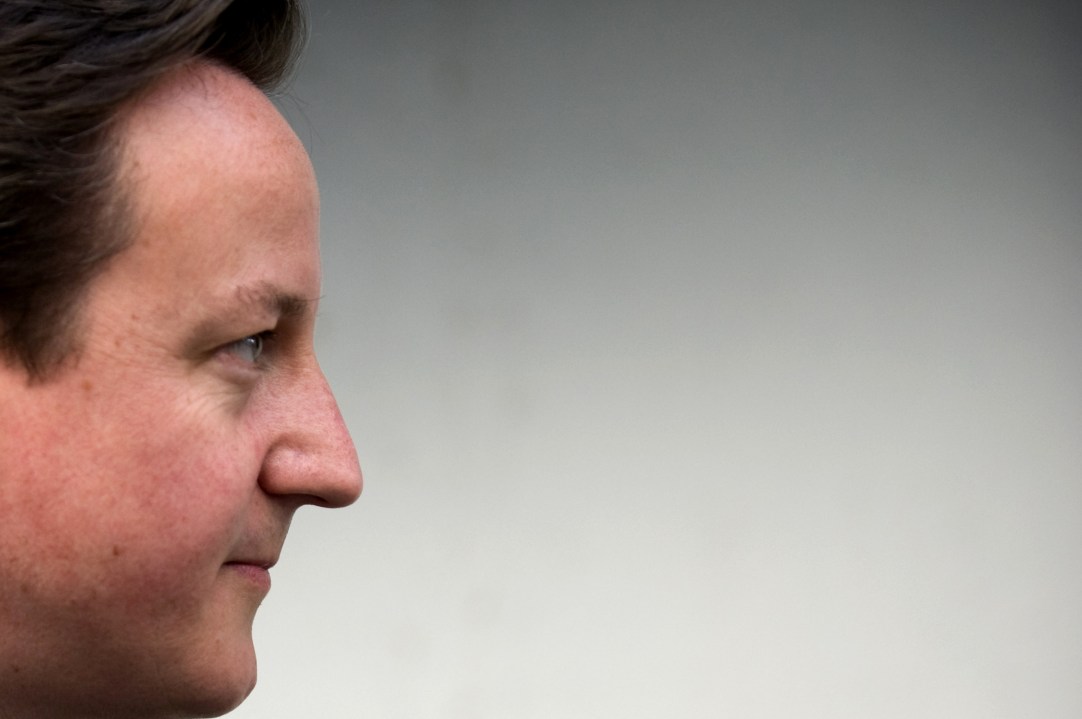 Aside from the “Calm down, dear” drama, there was something else worth noting from today’s
PMQs: David Cameron trying for a calmer debate on the deficit. He admitted that his government is not really being that much more aggressive than Gordon Brown would have been. They’re cutting
£8 for every £7 that Brown and Darling proposed for 2011-12, he said. It’s a line that Nick Clegg road-tested in his speech to the IPPR last week, and it represents a new and welcome strategy. To date, the
rhetorical differences have been stark. The Tories have said: we’re the big bold cutters, Labour are deficit deniers. Labour has replied: your cuts are too deep and too harsh, and the GDP
figures prove it. Cameron is taking this to a new, more subtle position, and the facts are on the side of the PM and his deputy. Here are a few of them:
Aside from the “Calm down, dear” drama, there was something else worth noting from today’s
PMQs: David Cameron trying for a calmer debate on the deficit. He admitted that his government is not really being that much more aggressive than Gordon Brown would have been. They’re cutting
£8 for every £7 that Brown and Darling proposed for 2011-12, he said. It’s a line that Nick Clegg road-tested in his speech to the IPPR last week, and it represents a new and welcome strategy. To date, the
rhetorical differences have been stark. The Tories have said: we’re the big bold cutters, Labour are deficit deniers. Labour has replied: your cuts are too deep and too harsh, and the GDP
figures prove it. Cameron is taking this to a new, more subtle position, and the facts are on the side of the PM and his deputy. Here are a few of them:
1. Osborne is not cutting deep and fast, as Balls claims. All he’s done is taken Labour’s trajectory of mild overall cuts — in Darling’s last Budget
— and cranked it up a notch. Many countries, when they face a fiscal blowup, make deep cuts at the beginning to get the pain over with. Osborne is proposing cuts which total 3.6 per cent
— hardly a vast amount. And, crucially, he’s stretching them over four years. Obama proposes to cut a little faster than Osborne: 4.2 per cent over two years. But he wants to do most of
it, 3.8 per cent, in 2011-12 alone, before returning to spending growth. So the pain is front-loaded. This is a fairly common course of action. The last time Britain had a major fiscal blowup
was in 1977-78, after the IMF bailout. Labour’s Denis Healey then cut more in that one year than Osborne is doing in four:

Osborne is not front-loading the pain. If anything, his cuts will be deeper towards the end of the Parliament. He has rejected the “get it over with quickly” approach, instead adapting
Labour’s original trajectory. The difference between his cuts and those proposed by Darling is just under 1 per cent a year. Economically, there is no great chasm between the two parties
— although they have both pretended otherwise. Darling’s published plans would have cut the deficit (aka, public sector net borrowing) by 60 per cent over five years. Osborne plans 74
per cent.
2. 0.6 per cent: the missing metric in the cuts debate. Isn’t it odd that so many people talk about cuts without ever attempting to quantify them? That’s because this
would spoil the whole fun. Total state spending is due to fall by 0.6 per cent over the financial year which has just begun. Then 1.1 per cent, 1.3 per cent, and, finally, 0.8 per cent in 2014-15.
Oddly, these figures are not included in the (extensive) Budget documents. The basic question — ‘how much is the government cutting in total?’ has no answer. Little wonder
it’s open to such misrepresentation. Cameron did very well to quantify his 2011-12 cuts in relation to Darling’s. His next step should be to give the overall cut figure of 0.6 per cent,
and let people decide for themselves if this is unduly harsh.
3. The real economic stimulus is the collapse of sterling. This happened two years ago, but the pound has not really recovered and the growth in the manufacturing sector is
extraordinary — as are the expected price increases. The last time so many manufacturers reported hiring extra staff over the previous three months was 1974. The CBI survey yesterday showed
that the number of manufacturers planning to add capacity is at the highest for 30 years:

4. Private sector growth is on the up. Cameron is right to be frustrated at the BBC’s description of the economy as in a state of cuts — although it will obviously feel like that to a bureaucracy whose own budget is being cut. Aside from the fiscal point, above, however, the fall in state payroll is being more than offset by more private sector work. But the government doesn’t make this point very well (even we had to fish the below stats out of the small print of the OBR’s Budget document). Again, Cameron went some way towards addressing this problem in PMQs saying that there are 390,000 more jobs in the private sector than a year ago. This is the right metric to keep quoting, as the below graph shows:

5. Anyway, you can’t read too much into quarterly GDP data. A post-recession economy zigzags its way to recovery. And the biggest problem of all might well be that when the
economy recovers — and those manufacturers look for the skilled labour they say they lack right now — it just sucks in overseas workers rather than shortening British dole queues. The
IDS/Grayling medicine is the right one, but it will take two terms to implement. So the real economic problem may be one that is as yet undiagnosed.
After a year pursuing the “sharp cuts” narrative, it’s not clear how successful Cameron will be is gearing his rhetoric towards “modest cuts”— but the facts are on
his side. He could have chosen to front-load the pain (like Obama/Healey), but has taken the Darling course of spreading it. One can debate the economic merits of this, but there’s no
political capital to be gained from his fiscal leniency if no one knows about it. First Clegg tried to spread the word, now Cameron and Osborne may well join him. All will have worked out that the
recovery will not (as they perhaps thought at first) tell its own story. As John Major found out, this is untrue. Numbers never speak for themselves: they need to be ventriloquised. This is Ed
Balls’ speciality.








Comments